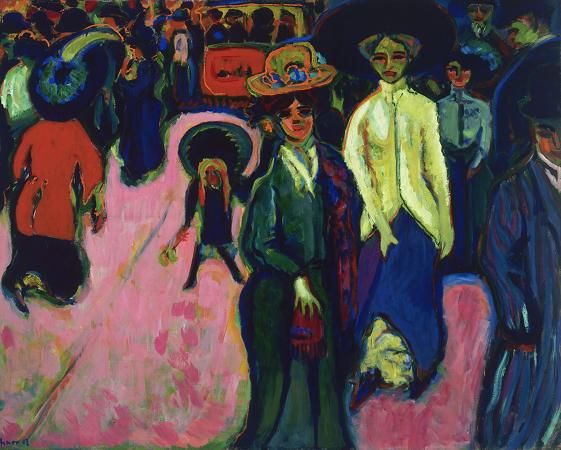Museum of Modern Art. The Museum of Modern Art is an art museum located in Midtown Manhattan, New York City, on 53rd Street between Fifth and Sixth Avenues. MoMA plays a major role in developing and collecting modern art, and is often identified as one of the largest and most influential museums of modern art in the world. MoMA's collection offers an overview of modern and contemporary art, including works of architecture and design, drawing, painting, sculpture, photography, prints, illustrated books and artist's books, film, and electronic media. The MoMA Library includes approximately 300,000 books and exhibition catalogs, over 1,000 periodical titles, and over 40,000 files of ephemera about individual artists and groups. The archives hold primary source material related to the history of modern and contemporary art. The idea for the Museum of Modern Art was developed in 1929 primarily by Abby Aldrich Rockefeller and two of her friends, Lillie P. Bliss and Mary Quinn Sullivan. They became known variously as the Ladies or the adamantine ladies. They rented modest quarters for the new museum in the Heckscher Building at 730 Fifth Avenue in Manhattan, and it opened to the public on November 7, 1929, nine days after the Wall Street Crash. Abby Rockefeller had invited A. Conger Goodyear, the former president of the board of trustees of the Albright Art Gallery in Buffalo, New York, to become president of the new museum. Abby Rockefeller became treasurer. At the time, it was America's premier museum devoted exclusively to modern art, and the first of its kind in Manhattan to exhibit European modernism. One of Abby Rockefeller's early recruits for the museum staff was the noted Japanese-American photographer Soichi Sunami, who served the museum as its official documentary photographer from 1930 until 1968. Goodyear enlisted Paul J. Sachs and Frank Crowninshield to join him as founding trustees. Sachs, the associate director and curator of prints and drawings at the Fogg Museum at Harvard University, was referred to in those days as a collector of curators. Goodyear asked him to recommend a director and Sachs suggested Alfred H. Barr, Jr., a promising young protege. Under Barr's guidance, the museum's holdings quickly expanded from an initial gift of eight prints and one drawing. Its first successful loan exhibition was in November 1929, displaying paintings by Van Gogh, Gauguin, Cezanne, and Seurat. First housed in six rooms of galleries and offices on the twelfth floor of Manhattan's Heckscher Building, on the corner of Fifth Avenue and 57th Street, the museum moved into three more temporary locations within the next ten years. Abby Rockefeller's husband, John D. Rockefeller, Jr., was adamantly opposed to the museum and refused to release funds for the venture, which had to be obtained from other sources and resulted in the frequent shifts of location. Nevertheless, he eventually donated the land for the current site of the museum, plus other gifts over time, and thus became in effect one of its greatest benefactors. During that time it initiated many more exhibitions of noted artists, such as the lone Vincent van Gogh exhibition on November 4, 1935. Containing an unprecedented sixty-six oils and fifty drawings from the Netherlands, as well as poignant excerpts from the artist's letters, it was a major public success due to Barr's arrangement of the exhibit, and became a precursor to the hold van Gogh has to this day on the contemporary imagination. The museum also gained international prominence with the hugely successful and now famous Picasso retrospective of 1939-40, held in conjunction with the Art Institute of Chicago. In its range of presented works, it represented a significant reinterpretation of Picasso for future art scholars and historians. This was wholly masterminded by Barr, a Picasso enthusiast, and the exhibition lionized Picasso as the greatest artist of the time, setting the model for all the museum's retrospectives that were to follow. Boy Leading a Horse was briefly contested over ownership with the Solomon R. Guggenheim Museum. In 1941, MoMA hosted the ground-breaking exhibition, Indian Art of the United States, that changed the way American Indian arts were viewed by the public and exhibited in art museums. When Abby Rockefeller's son Nelson was selected by the board of trustees to become its flamboyant president in 1939, at the age of thirty, he became the prime instigator and funder of its publicity, acquisitions and subsequent expansion into new headquarters on 53rd Street.
more...














